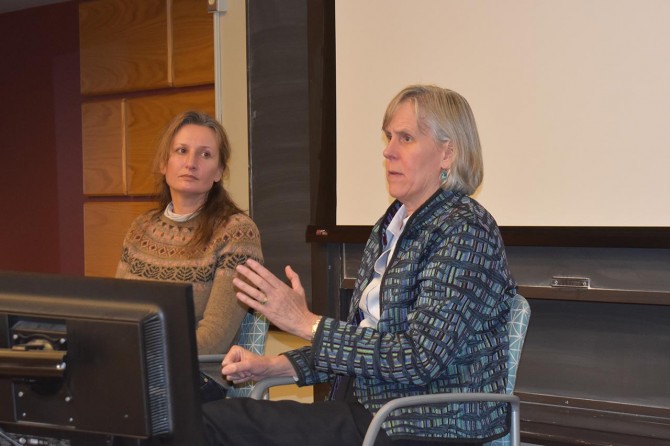Discussion explores use of social impact bonds
By Paul Russell
Generations of political scientists and government officials have explored new ways for citizens and organizations to partner with the state to create change in struggling communities. Social impact bonds (SIBs) are regarded as a major milestone in this search.
SIBs are contracts in which a private actor agrees to use financing from investors to implement a program that will provide a social benefit and save the government money. If the program meets agreed-upon targets for social benefit, the government pays the investors the money it saved, plus the principal.
In Salt Lake City, in 2013, a SIB called for investors to fund a preschool program for children in low-income communities. For every student eligible for state-funded special education who didn’t need to access this resource after the program, the investors were paid a set amount. The program’s results were overwhelmingly positive, and as a result SIBs are often heralded as a testament to the importance of preschool education and the utility of the bond as a mechanism for social change. Some practitioners and academics, however, would disagree.
“The Invisible Heart,” a feature-length documentary directed by Nadine Pequeneza, gives viewers a firsthand look at some of the bonds’ advantages and disadvantages. On Nov. 5, Pequeneza visited Cornell for the Leaders in Sustainable Global Enterprise Colloquium, and took part in a Q&A alongside Mildred Warner, M.S. ’85, Ph.D. ’97, professor of city and regional planning and a key critical voice in the film. The two discussed their views on the use of SIBs around the world.
Warner said SIBs are best implemented as test cases to push governments to directly invest their own money in similar programs. “The Utah case I consider to be a success because the goal of the designers was to get the state legislature to allow public education funding to be spent on preschool,” she noted. “The SIB was a means to an end.”
In her view, most SIBs are not used for that purpose and have far too many disadvantages to be a sustainable long-term solution.
One such disadvantage is the price tag. To attract investors, governments often promise high interest rates. Warner said those governments using taxpayer dollars for SIBs should instead implement the programs on their own. “Investors are not interested in risky finance,” Pequeneza said, so most SIBs employ social programs and tactics proven to be effective.
Warner also advocated for avoiding an investment model because of the hierarchical dynamics associated with giving a few nonelected individuals the power of the purse. “The SIB substitutes a financial scrutiny as the power that matters and drives the system,” she said, crowding out other forms of evaluation.
Warner said actors in a given SIB are prone to myopia, often focusing on reaching specific targets more than promoting social wellbeing. “The pressure to perform to the metric is very strong,” Warner said.
This, for example, can lead teachers to teach to tests that measure their performance, or lead social workers to neglect to sign individuals up for government programs they need, if the denial of these programs would trigger payments to investors.
Though these drawbacks exist, Pequeneza and Warner are hopeful many organizations, governments and investors feel pressure to improve the way they plan and implement social impact bonds.
Pequeneza said the most positive changes may not come from major innovations: “The solutions to these problems are more – I don’t want to say anticlimactic, but they aren’t superman in a cape.”
Paul Russell '19 is a writer for the Center for Sustainable Global Enterprise.
Media Contact
Get Cornell news delivered right to your inbox.
Subscribe

